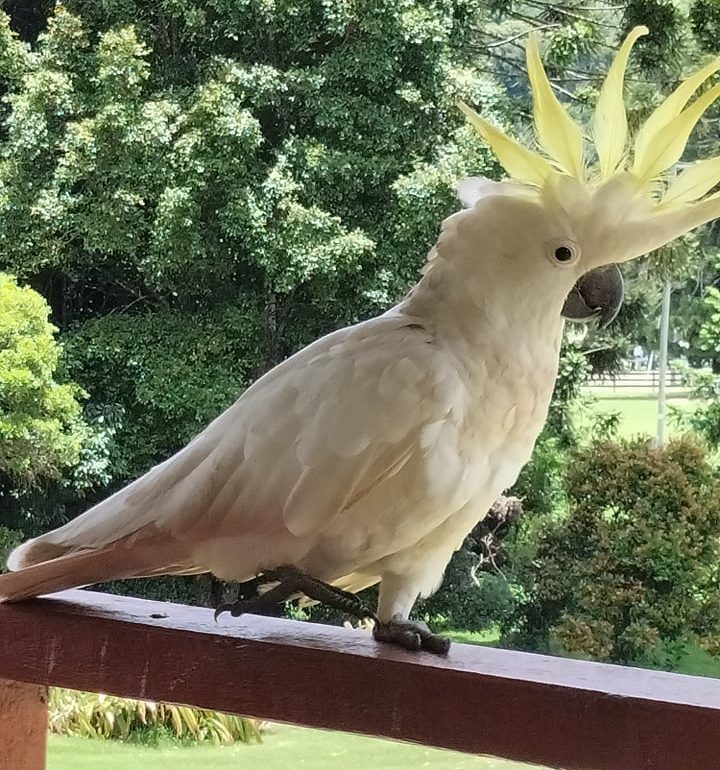
Sulphur crested Cockatoo taken with phone
The Bunya Mountains is an attractive destination but also a great birding location. Some 200 kilometres from the coast and an equal distance north-east from Brisbane it is an island of upland rainforest surrounded by plains dominated by farming.
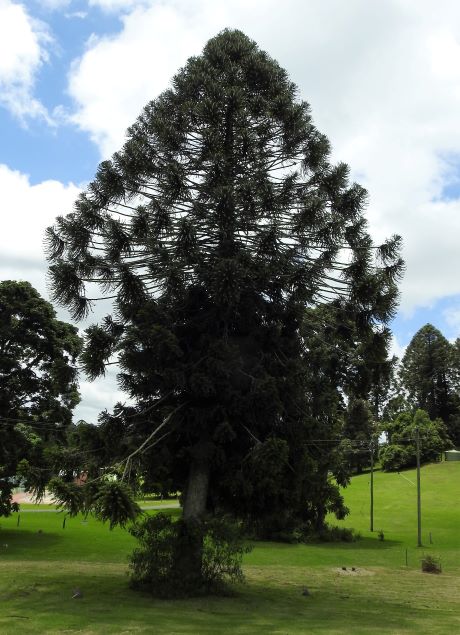
The mountains are named after ancient Bunya Pines Araucaria bidwillii, a common species [pictured above] within the forests and one that dominates the skyline from the main accommodation area. The Bunya Pines were revered and literally celebrated by generations of aborigines who, during the season migrated to the mountains to feast, corroboree, and trade with other clans. The bunya nuts, from the cone, which is as large as a football, provide a valuable carbohydrate.
Recently I visited the Bunya Mountains for a quick few day getaway. My first during the season of summer and it did not disappoint. Being elevated, despite the strong sun, maximum temperatures only hit 26 degrees Celcius; fully five degrees below that of the lowlands. And the evenings were mild.
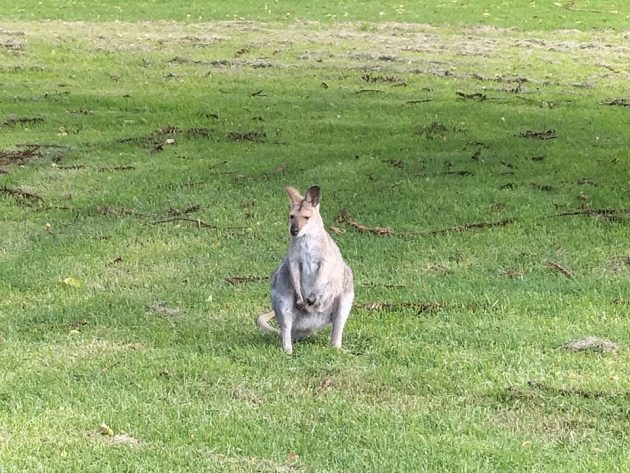 Red necked Wallaby – a phone snap.
Red necked Wallaby – a phone snap.
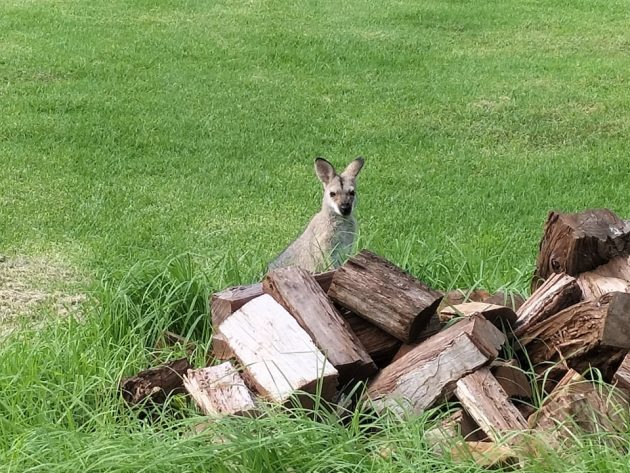
Red necked Wallaby – a phone snap.
One of the attractions for general tourists are the views one can get of some attractive wildlife. Red necked Wallabies are abundant and are easily seen grazing in the large lawns surrounding the many homes available for holiday rentals. By the forest edge another macropod species appears, the less common Black striped Wallaby [below]. They are much more easily spooked and will take refuge in the forest rather than in plain sight like the Red-necks.
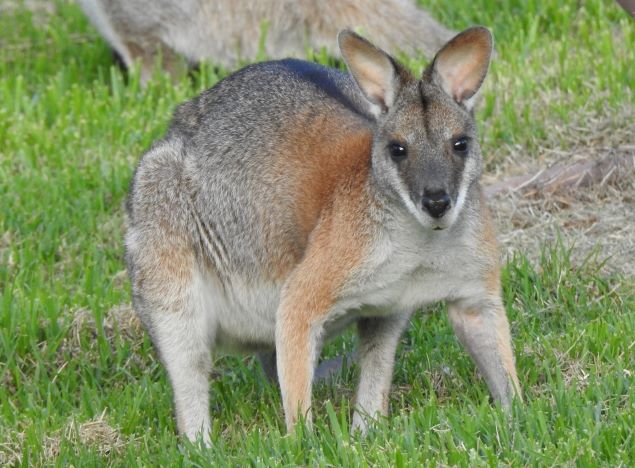
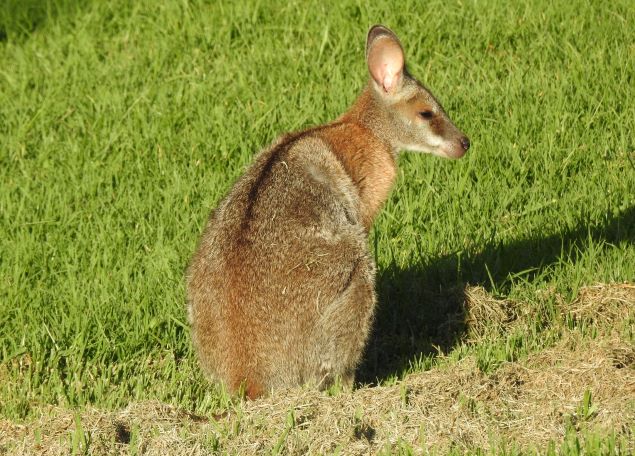
Every veranda in the Bunyas has bird feeding potential. We, typical tourists that we are, purchased some bird seed mix, to promote some pro bird propaganda to my daughter who, aware of my interests, has decided that birds are not cool. Short story: despite some initial misgivings, she loved seeing such colourful birds at an arm length.
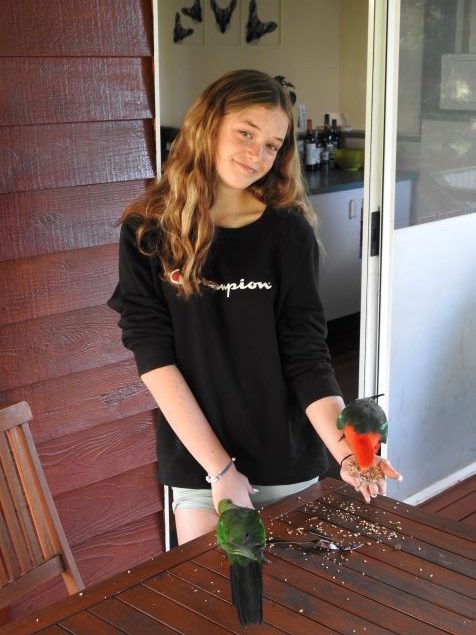
King Parrots – male on right, female on left
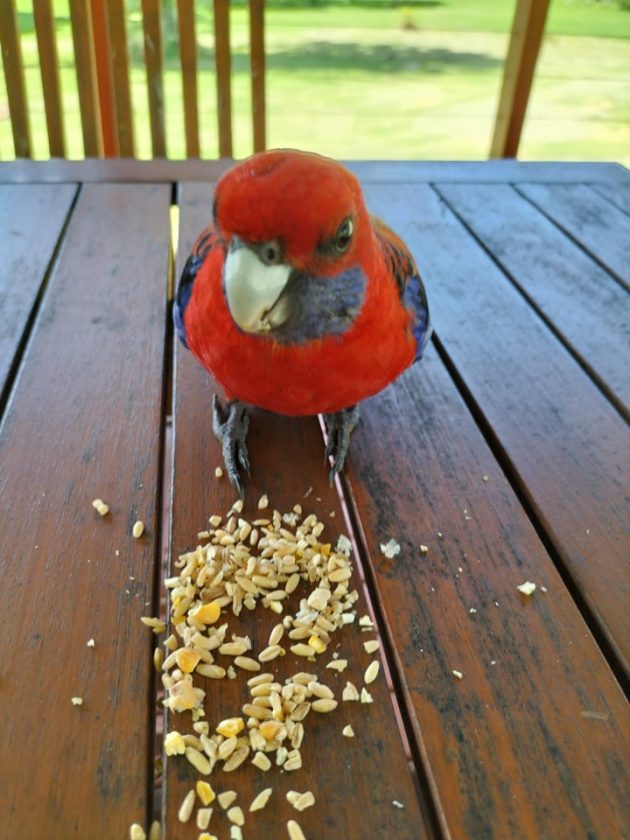
The first birds to arrive were a pair of Crimson Rosellas, one photographed above with my mobile. Followed by a few King Parrots. To complete the show we enjoyed ring side seats of some Sulphur crested Cockatoos. Satin Bowerbirds also made an appearance as did Pied Currawongs.
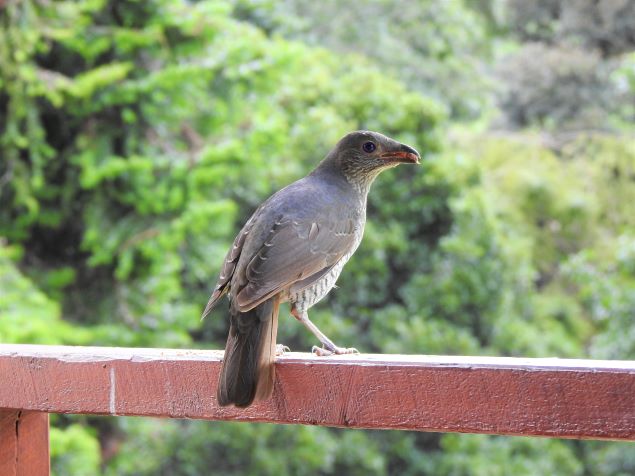 young male Satin Bowerbird
young male Satin Bowerbird
From the veranda, sipping wine, we also recorded Superb Blue Wrens, Yellow rumped Thornbills, Brown Cuckoo doves, Topknot Pigeons [below], White headed Pigeons, Laughing Kookaburra, Regent Bowerbird and Victoria’s Riflebird.
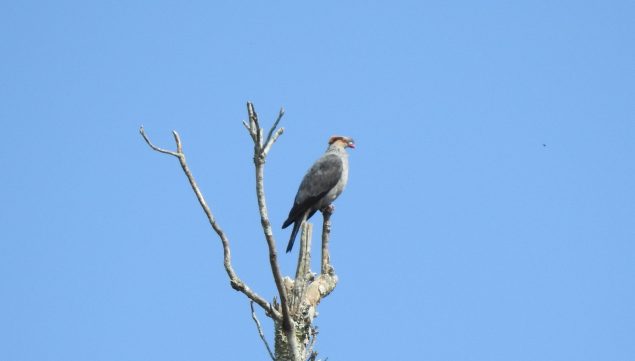
The following day an easy five-kilometre stroll produced a few more species: Golden Whistler, Grey and Rufous Fantails, Yellow throated, White browed and Large billed Scrubwrens, Green Catbird, Black faced Monarch, Silvereyes, Yellow and Brown Thornbills, Brown Gerygones, Eastern Whipbird, Eastern Yellow Robin and Brush Turkey. Noisy Pitta was heard but sadly not seen.
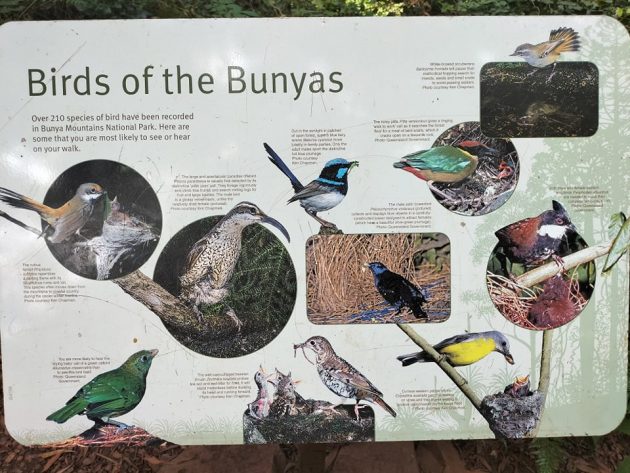
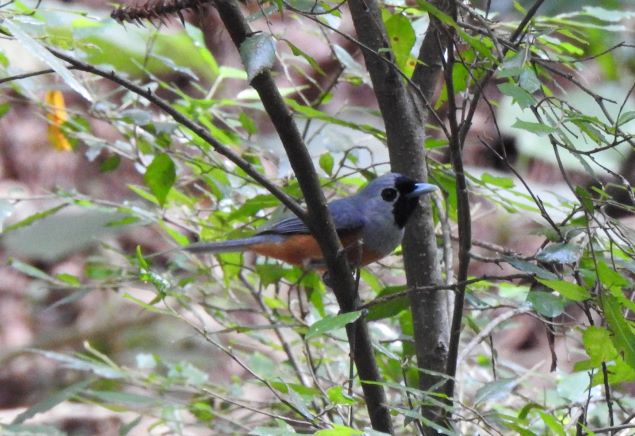 Black faced Monarch
Black faced Monarch
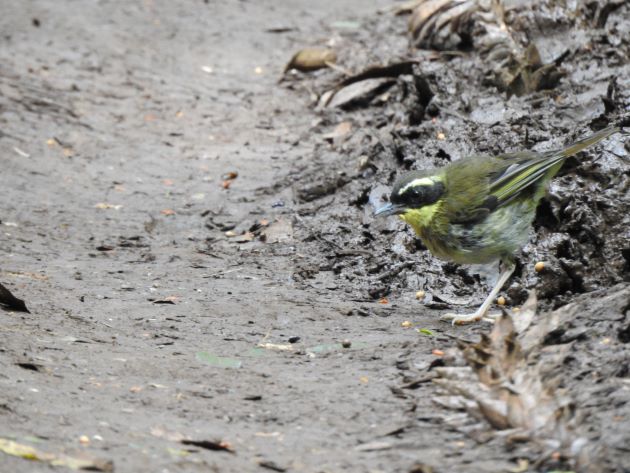
Yellow throated Scrubwren
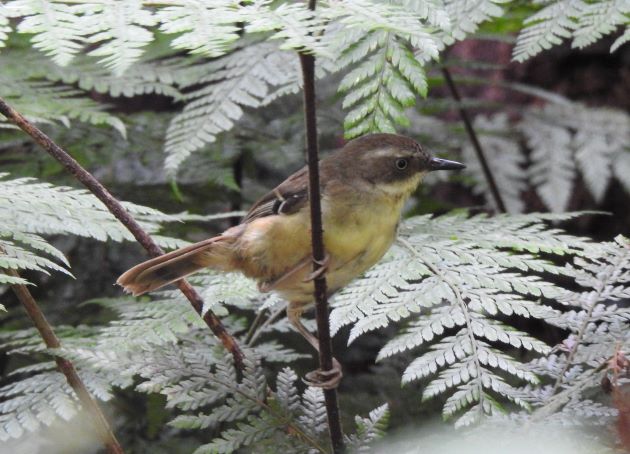
White browed Scrubwren
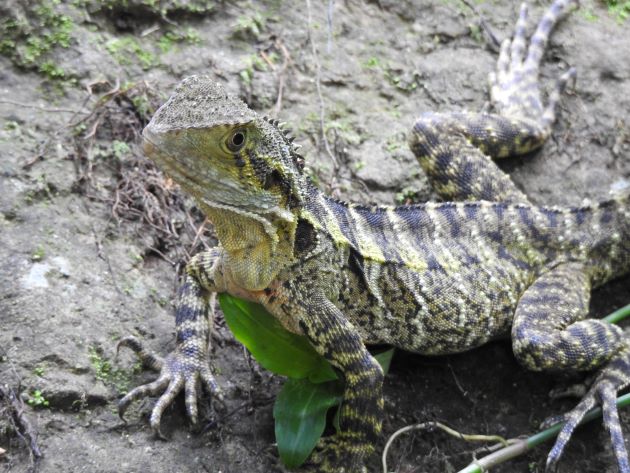
Eastern Water Dragon
Butterflies were abundant and I even scored a lifer – a Wonder Brown.
All in all a great spot for a few days!
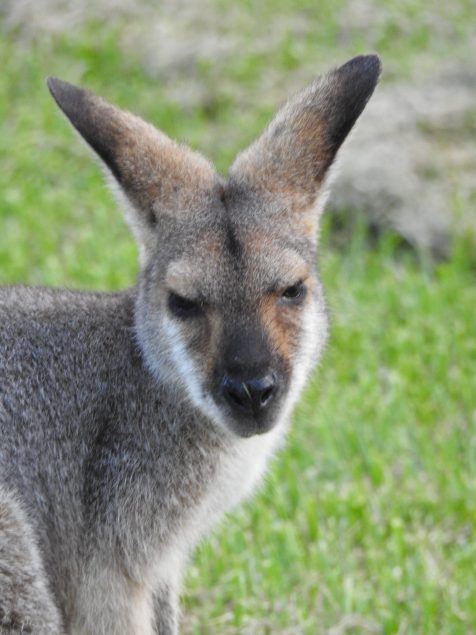






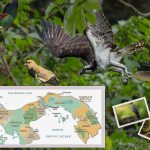
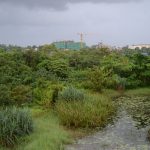

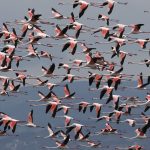



Paradise Rifle Birds are found on the Bunya Mountain not Victoria.
Please do not recommend the feeding on Native Birds to the Tourists, as this creates many problems for them.
The Sulpher-crested Cockatoo is not a native of the Bunya Mountains and has only arrived on the Mountain as a resident after the severe droughts of recent years. It is a very destructive bird, causing the death of young Bunya trees by ring barking them and causing damage to mature Bunya trees by killing the growing tops out of them.